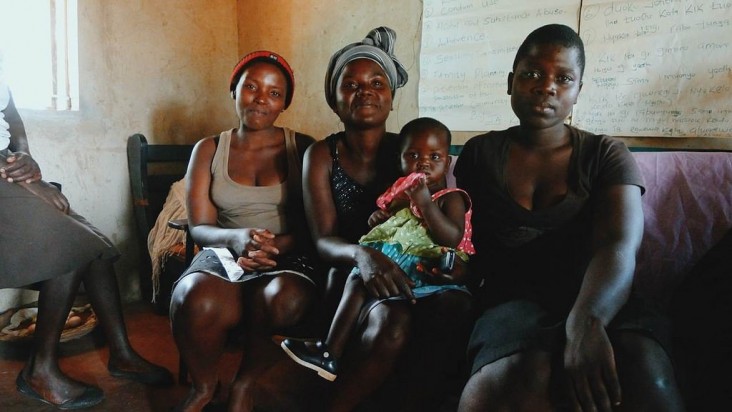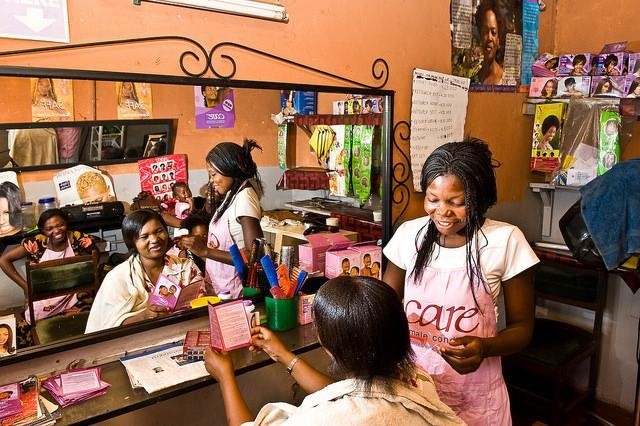- What We Do
- Agriculture and Food Security
- Democracy, Human Rights and Governance
- Economic Growth and Trade
- Education
- Environment and Global Climate Change
- Gender Equality and Women's Empowerment
- Global Health
- Humanitarian Assistance
- Transformation at USAID
- Water and Sanitation
- Working in Crises and Conflict
- U.S. Global Development Lab
Speeches Shim

The Unmet Need for Family Planning
More than 214 million women globally have an unmet need for family planning, meaning that they want to delay or avoid pregnancy but are not using a modern method of contraception. Approximately one in four women in sub-Saharan Africa have an unmet need for family planning, and women living with HIV have even more limited access to family planning and reproductive health care than the general population. Ensuring all women living with HIV have access to these services can significantly reduce unintended pregnancies, maternal deaths (including those related to HIV) and new pediatric HIV infections. Choosing the number, timing and spacing of children is a basic right of all women and couples, no matter their HIV status, and the U.S. Agency for International Development (USAID) works to increase access to family planning information and voluntary family planning services for all who want it. However, specific considerations must be addressed to ensure comprehensive care for people living with or affected by HIV.
USAID’s Response
USAID, through the U.S. President's Emergency Plan for AIDS Relief (PEPFAR), supports strategic integration of HIV and family planning activities to advance our commitments to the achievement of the Joint United Nations Programme on HIV/AIDS (UNAIDS) 90-90-90 goals, PEPFAR Strategy for Accelerating HIV/AIDS Epidemic Control (2017–2020) [PDF, 2.9MB] and Family Planning 2020’s global goals. Integrated programs and services enable better utilization of limited financial and human resources by meeting multiple health needs and increasing access to high-quality, comprehensive care for the vulnerable populations USAID serves. Opportunities for strategic integration exist across prevention, care and treatment platforms.
The U.S. Government’s global health strategy to meet the family planning needs of women living with HIV is based on three key guiding principles:
- A focus on reproductive rights through voluntarism and informed choice
- Quality service provision through evidence-based programming
- Development of partnership

Integrated services can ensure that all people living with HIV/AIDS have access to family planning services that support their fertility choices. USAID coordinates with other agencies at the country level to make integrated services available to the clients we serve. PEPFAR funds cannot be used to procure contraceptive commodities except for male and female condoms. Therefore, it is critical that USAID missions, in partnership with national governments, provide technical leadership and support to ensure that a wide range of family planning commodities are available in USAID-supported health sites, including HIV service delivery sites where family planning method provision is a part of the service delivery package. In addition, USAID, in collaboration with PEPFAR partners, is actively engaged in analyzing and interpreting available data on key integration issues such as hormonal contraception-HIV acquisition and hormonal contraception-antiretroviral therapy (ART) interactions. USAID also supports the development of innovative contraceptive technologies to protect against unintended pregnancy, HIV and other sexually transmitted infections.
Key country-level activities include:
- Supporting context-specific models of integration, as there is no “one size fits all” approach to family planning and HIV integration.
- Ensuring availability of a wide range of family planning commodities in HIV service delivery platforms by supporting country-led contraceptive planning and distribution processes.
- Supporting research studies, documenting best and promising practices, and providing technical assistance to national programs to scale up evidence-based integration models.
- Facilitating an enabling environment for integration, including support for the creation of technical working groups to develop and disseminate national policies and implementation guidance related to integration.
- Identifying critical system barriers and constraints and designing programs to address them.
- Providing targeted support for provider training and quality assurance for family planning service provision in line with identified needs and working collaboratively with other U.S. Government agencies to meet those needs.
- Ensuring linkages between family planning and HIV service delivery stakeholders, including prevention of mother-to-child transmission, care and treatment, key populations, adolescent girls and young women through the DREAMS partnership and health systems strengthening programs.
Voluntarism and Informed Choice:
USAID supports a woman’s right to use or not use family planning regardless of HIV status. Her decision should be free of any discrimination, stigma, coercion, duress or deceit and informed by accurate, comprehensive information and services, including access to a variety of contraceptive methods. In addition, the provision of health care, including ART, should never be conditioned on acceptance of a family planning method. Learn more about USAID’s family planning guiding principles and U.S. legislative and policy requirements.
For more information about USAID's Family Planning/HIV integration efforts, please contact nmani@usaid.gov or jmason@usaid.gov
Additional Resources
General Information:
- Family Planning/HIV Integration: Important Contributions to the Global HIV Goals [PDF, 11.6MB]
- Toolkit on Integration of Family Planning and HIV Services
- Family Planning and HIV Service Integration eLearning Course (available in Arabic, English, French, Portuguese, and Spanish)
- Integrating Family Planning into HIV Programs: Evidence-based Practices [PDF, 485KB]
- View an interactive presentation (Prezi) on Family Planning/HIV Integration
- Strategic Considerations for Strengthening the Linkages between Family Planning and HIV/AIDS Policies, Programs and Services
- Sexual and Reproductive Health and HIV Linkages Toolkit
Family Planning/HIV Programming Guidance
- Integrating Family Planning and Antiretroviral Therapy: A Client Oriented Service Model [PDF, 1.3MB]
- The Balanced Counseling Strategy Plus (BCS+): A Toolkit for Family Planning Service Providers Working in High HIV/STI Prevalence Settings
- Family Planning: A Global Handbook for Providers
- World Health Organization Family Planning Clinical Guidelines and Counseling Tools
- Reproductive Choices and Family Planning for People Living with HIV [PDF, 5.2MB]
- Field Guide: Family Planning and HIV Integrated Supply Chains [PDF, 501KB]
- WHO Department of Reproductive Health: Medical Eligibility Criteria for Contraceptive Use
- DREAMS partnership
- PEPFAR Family Planning/HIV Task Force commentary: Meeting the Family Planning Needs of Women Living with HIV in U.S. Government Global Health Programs
- PEPFAR Family Planning/HIV Task Force commentary: The Role of Family Planning in Achieving Safe Pregnancy for Serodiscordant Couples
Hormonal Contraception and HIV Acquisition Resources
- PEPFAR Update: 2017 Hormonal Contraception – HIV Acquisition Technical Brief [PDF, 735KB]
- USAID Update: Hormonal Contraception and HIV Acquisition [PDF, 146KB]
- U.S. Government Hormonal Contraception-HIV Briefer [PDF, 201KB]
- HC3 Dual Method Use Tools
- HC3 Strategic Communication Framework for Hormonal Contraceptive Methods and Potential HIV-Related Risks [PDF, 1.3MB]
Hormonal Contraception and Antiretroviral Therapy Interactions
- Contraceptive Method Considerations for Clients with HIV including Those on ART: Provider Reference Tool
- Issue Brief: Decreased Contraceptive Efficacy Reported in Women Living with HIV Who Use Implants While Taking the Antiretroviral Efavirenz [PDF, 548KB]
- Issue Brief: Drug Interactions between Hormonal Contraceptive Methods and Antiretroviral Medications Used to Treat HIV [PDF, 463KB]
Monitoring & Evaluation
- Family Planning/HIV Integration Quality Assurance Tool [PDF, 4.1MB]
- Family Planning/HIV Integration Indicator Manual
- Monitoring the Integration of Family Planning and HIV Services: Indicators both to Measure Progress toward the 90-90-90 Targets and Ensure the Reproductive Rights of All Women

Comment
Make a general inquiry or suggest an improvement.